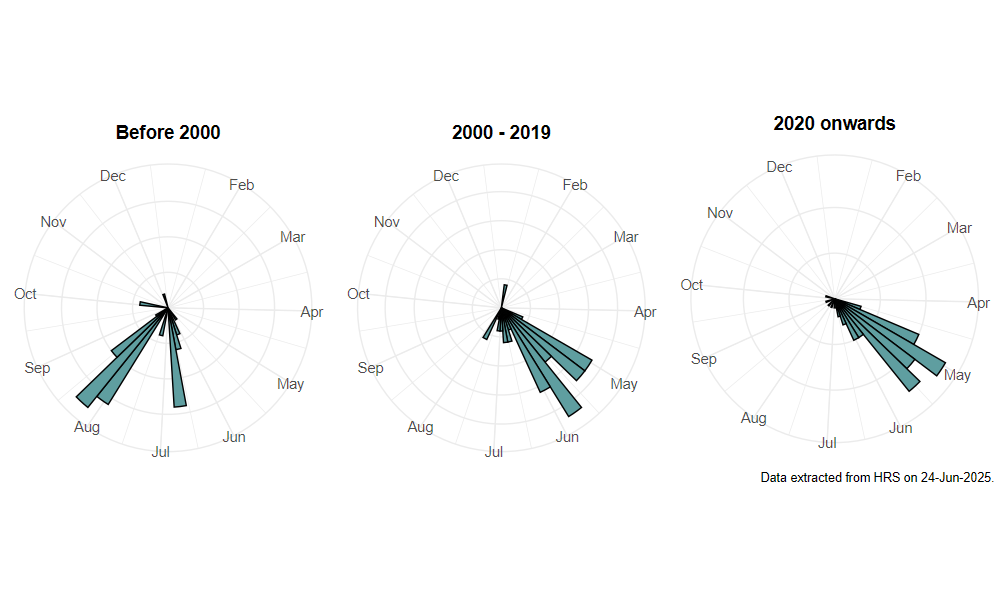Callicera rufa Schummel, 1842
Identification
Identification difficulty = 2. ![]()
![]() according to Ball & Morris, 20241
according to Ball & Morris, 20241
Biology
The larva occurs in rot-holes between bifurcating branches and in wet holes at the surface of stumps of Scots Pine Pinus sylvestris (and also Larch Larix sp., MacGowan, 19942). Adults are rarely encountered in the Scottish range, but seem to be more easily seen at the English sites. Usually either males basking in sunshine on truks or females searching for oviposition sites on pine trunks and stumps. Experiments have shown that rot-holes created artificially by cutting into pine trunks with a chain-saw are utilised readily and can be occupied within a few months.
Flight period
The following plots show the number of unique records per week excluding those reported to be of immature stages.

Status
Lower Risk (Nationally scarce) - Ball & Morris, 20143. Rare (RDB3) - Falk, 19914. Endangered (RDB1) - Shirt, 19875.
Distribution
Traditionally regarded as a species of the Caledonian pine forests across the Scottish Highlands although records extend south to the Perth area. This species has been the subject of detailed studies by the Malloch Society that have shown C. rufa to occur in the majority of locations in northern Scotland where ancient Scots Pine Pinus sylvestris occurs. Recent evidence suggests that this species has extended its range in response to new habitat created by felling of mature conifer plantations. Over the past decade or so it has become established at a growing number of locations across the south and midlands of England. It is not known whether this represents an expansion from the Scottish population or colonisation from the near Continent.

Trends
The following plots show the Frescalo TFactor vs year and a map of the rescaled frequency (all records) for the species.
-
Ball, S., & Morris, R. (2024). Hoverflies of Britain and Ireland. WILDGuides (3rd ed.). Oxford: Princeton University Press. ↩
-
MacGowan, I. (1994). Creating breeding sites for Callicera rufa Schummel (Diptera, Syrphidae) and a further host tree. Dipterists Digest (Second Series), 1, 6–8. ↩
-
Ball, S., & Morris, R. (2014). A review of the scarce and threatened flies of Great Britain. Part 6: Syrphidae. ( No. 9). Species status (pp. 1–130). Peterborough: JNCC. ↩
-
Falk, S. (1991). A review of the scarce and threatened flies of Great Britain. ( No. 39). Research and Survey in Nature Conservation (pp. 1–194). Peterborough: NCC. ↩
-
Shirt, D. (Ed.). (1987). Red Data Books: 2. Insects. Peterborough: NCC. ↩